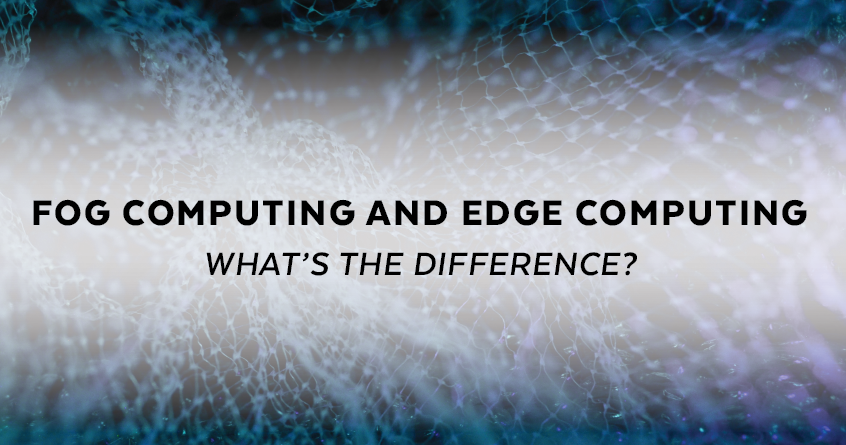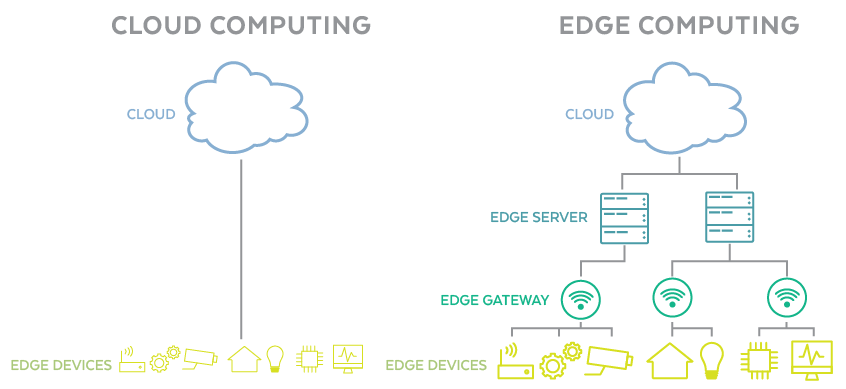Fog Computing Defined
Fog computing or fogging is an architecture that leverages edge devices to undertake vast amounts of computation, storage, and communication locally. It helps distributed computing with numerous peripheral devices connect seamlessly to the cloud and avoid high latency and low bandwidth issues during network data processing.
How Does Edge Computing Work?
Edge computing works by capturing and processing data close to the source of the data or to the point where the data is needed. It leverages computing devices, sensors, and other machinery to capture data and send it to the cloud or edge servers. Depending on the task at hand and the desired results, the data may provide automation capabilities, feed analytics, and machine learning systems or provide visibility on the real-time state of the product, system, or device.
Fog vs. Edge Computing: What’s the Difference?
Although most people use the terms fog computing and edge computing interchangeably, the two have critical differences. The fundamental difference between fog and edge computing lies in the place where computer power and intelligence come together. In a fogging environment, intelligence is at the local area network (LAN), with data being transmitted from endpoints to a fog gateway before being retransmitted to sources for processing and return transmission. In edge computing, intelligence and power are at the gateway or the endpoint. This ensures each device operates independently to determine whether to store the data locally or to transmit to the cloud or gateway for more analysis.
How to Use Edge Computing
Several applications can benefit from edge computing’s ability to bring processing and storage capabilities closer to where it is needed. It delivers value for smart IoT applications cutting across various industries. Edge computing also delivers high security, enhances productivity, and improves enterprise performance. The following are some of the areas where edge computing is used:
- Predictive maintenance: It is crucial for manufacturers to detect and resolve potential failures in their production lines before they happen. Edge computing brings processing and storage data closer to the target equipment, enabling IoT sensors to monitor system health and undertake analytics in real-time.
- Smart grid: Edge computing can be used in smart grids to allow entities to manage energy consumption efficiently. Sensors and IoT devices connecting to an edge platform in offices, plants, and factories can help monitor energy use and provide real-time data analytics regarding energy consumption.
- Autonomous vehicles: One of the first use cases for edge computing is autonomous platooning of truck convoys. In a scenario where a group of trucks travels closely behind each other in a convoy, edge computing can help remove the need for drivers in all trucks except the front one. This is because edge computing ensures trucks communicate with each other via ultra-low latency.
- In-patient monitoring: Healthcare systems provide tremendous edge opportunities. Currently, most healthcare facilities use IoT devices such as smart glucose monitors to monitor patients. However, massive amounts of unprocessed data from the devices are stored in a third-party cloud prone to security issues. Edge computing in hospitals processes data locally, thus ensuring high levels of data privacy.
- Smart homes: Smart homes use IoT devices to collect and process data within the home environment. Usually, the data is transmitted to a centralized remote server for processing and storage. However, this architecture presents issues related to security, latency, and cost. When using edge computing, the processing and data storage are closer to the smart home. This dramatically reduces the backhaul and roundtrip time while ensuring the security of sensitive information.
The Benefits of Edge Computing
The following are some of the benefits of edge computing:
Faster response time: Deploying computation processes near edge devices reduces or removes latency. With edge computing, the router located within the office becomes the platform in charge of transfers. This saves bandwidth while reducing delays.
Cost efficiency: Edge computing saves bandwidth and server resources that ultimately translate to cost savings. It benefits applications that deploy cloud resources to support several devices within offices or homes. Edge reduces server expenditure by moving all device computation to the edge.
Data security and privacy: Moving data across servers located in far places exposes your environment to privacy, security, and legal issues. It makes it easier for bad actors to hijack your data for ransomware or phishing. Because edge computing keeps all your data close to its source, it ensures data security. Besides, it also ensures your data stays managed within the boundaries of data laws such as GDPR (General Data Protection Regulation) and HIPAA (Health Insurance Portability and Accountability Act).
Easy maintenance: Edge computing is easy to maintain edge devices and systems, helping you avoid maintenance costs. Besides, it consumes less power needed for data processing and cooling needs.
The Disadvantages of Edge Computing
The following are some of the disadvantages of edge computing:
Limited scope: The purpose and scope of edge computing is limited when compared to cloud computing. In essence, edge computing is less flexible and scalable than cloud computing. Besides, cloud computing is also more reliable than edge computing owing to its centralized nature, data backup, business continuity, and disaster recovery capabilities.
Connectivity: Edge computing must have excellent connectivity for effective data processing. Where connectivity is absent or lost, you need to invest in robust failure planning to avoid potential issues.
Cost and storage: Although cloud storage expenses are generally minimal, there are extra costs you incur at the local end. These costs are typically related to creating storage capacity for edge devices. You may also need to upgrade your old IT network infrastructure to handle edge devices and storage.
Optimize Fog Computing
A key issue with cloud computing is increased latency. Because the cloud platform is not physically near the data source, data transmission takes additional time. This can affect the overall performance of latency-sensitive services and applications. Fog computing helps remove latency while extending the overall reach of the cloud servicer to the data source.
Another technology that adds flexibility to your business network is Power over Ethernet (PoE). PoE empowers your network administrators to deploy powered devices at an ideal location to optimize efficiency, productivity, and security. Ideally, you can use shielded cabling for your outdoor environments or industrial-grade powered devices for a range of your industrial environments.
If you are looking for dependable industrial-grade PoE products, contact Planet Technology. We provide industrial PoE switches and other equipment designed to withstand harsh environments. They are ideal for many applications, including manufacturing and processing. Contact us today to speak with our engineers about your project.



